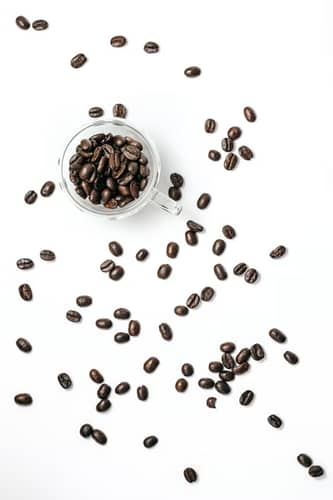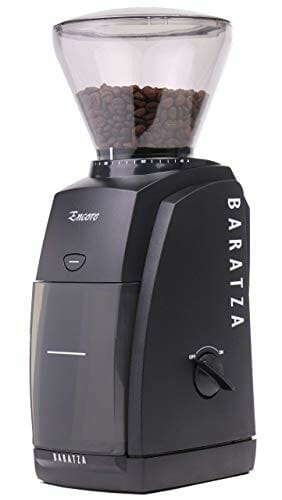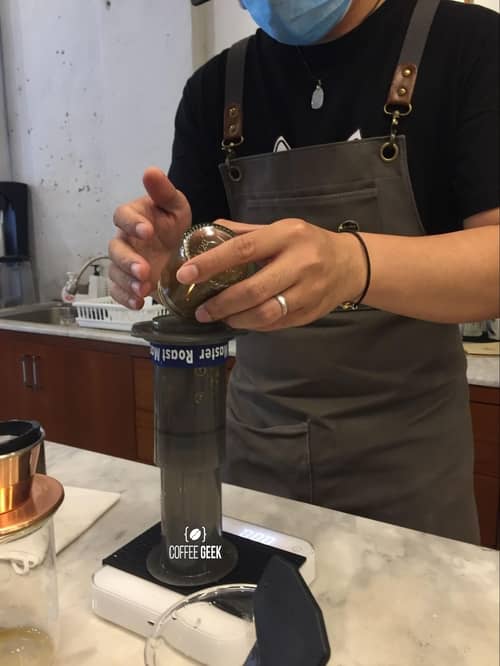Have you ever wondered why your coffee bean sometimes has an oily appearance? It’s not a bad thing, but it can cause some problems if you’re not prepared.
In this article, we’ll discuss what causes oily coffee beans and how they may potentially be bad for both your coffee and brewing equipment.
We’ll also bust some common myths associated with this type of coffee bean and give you tips on how to avoid any issues they may cause. So, read on to learn more!
Does Coffee Contain Oil?

Yes, all coffee beans contain oil. You might be surprised to learn that coffee does in fact contain oil. However, it’s important to note that this oil is not the same as the oil that’s used in cooking.
What Are Coffee Oils?

They’re a naturally occurring compound in coffee beans. These oils largely contribute to giving freshly roasted coffee beans their complex flavors, rich aromas, and heavier mouthfeel.
While not all coffee drinks contain the same levels of oils, they are a vital component of every good cup of brewed coffee.
What Causes Oily Coffee Beans?
There are a few things that can cause an oily coffee bean.
1. Coffee Roasting Process
As I said, coffee oils are natural and all coffee beans have them. Yet, some seem to have more oil than others. Why is that?
When roasting coffee beans, there are a lot of changes happen outside and inside of them. And oily beans are one of the results of chemical reactions that take place here. As the coffee beans roast, carbon dioxide gases are formed and trapped inside them.
And the longer the beans are roasted, or the darker the roast profile becomes, the more pressure the gas build-ups apply to the walls, and the more cracks can be heard and seen.
Here’s a dose of coffee roasting lesson: All of these chemical reactions that cause the caramelization and cracks of the beans are referred to as the Maillard reaction.
These cracks help release some of the CO2 and these gases will react with the oxygen in the external environment, producing the oily sheen that’s visible on the surface of the coffee beans.
That’s why light or medium roast coffee beans don’t have that signature oily look that many (very) dark roasts (eg. dark French or Italian roast) have. They’re just simply not roasted for long enough.
Light-roasted coffee is pulled out at the first crack, while coffee roasters stop right before the second crack for medium coffee roasts. Darker roasted beans, on the other hand, can experience anywhere from the beginning to the end of the second crack.
2. Natural Aging
However, you can also catch the light roast and medium beans sporting an oily look. As beans age weeks after being roasted, the coffee oils from inside the beans will naturally make their way to the surface.
If this happens, it can be an indication that they’re older coffee beans or stale coffee, possibly having lost some of their original flavor compounds as well. So, always check the roast date.
How To Tell If Coffee Beans Are Oily
There are a few key signs that can indicate whether or not your coffee beans are oily.
1. Shiny Appearance
The first is appearance. If they have a shiny surface, high chance that’s oil.
2. Greasy Residue
What’s more, when you open a bag of oily coffee beans, you might notice a slightly greasy and oily residue on the inside of the bag.
This is another sign that oil has been produced during the roasting process. Or, for lighter roasts, they’ve been there for a while now and you should consider getting new beans for drinking fresh coffee.
3. Slick Feeling
Finally, if you rub some of your processed coffee between your thumb and forefinger and it feels slick or shiny, your coffee likely has an oily texture as well.
With these tips in mind, it should be easy to tell whether or not your coffee beans are oily just by looking and feeling them!
How Do Oily Beans Affect The Taste?
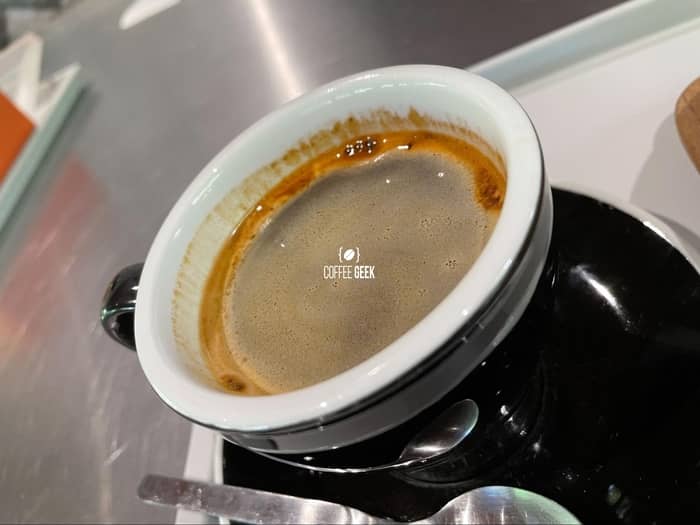
Generally speaking, beans with a higher oil content will produce a richer, more full-bodied cup of coffee.
The oils give the coffee a more complex mouthfeel and add depth to the flavor, giving the impression that the coffee is stronger and bolder.
On the other hand, a light roast or medium roast with less oil tends to be more acidic and have a brighter taste due to preserving more original flavor compounds.
Of course, many other factors contribute to the flavor of coffee, so don’t put too much emphasis on the oil content
At the end of the day, it’s up to your personal preferences. Try out different beans and roasts to find the perfect cup for you!
Are Oily Coffee Beans A Problem?
Yes, they can be a problem. While the strong, delicious “coffee-like” taste that oily dark roast beans are desirable for many coffee drinkers, there are also certain risks concerning your grinder, coffee machine, and your health you should keep in mind when drinking coffee.
Are Oily Coffee Beans Bad For Grinder?
Yes. When you’re grinding whole bean oily coffee, the oils can dull and clog up your burrs, affecting the performance of the machine grinders.
Does that mean you should get pre-ground coffee instead when you’re craving dark-roasted coffee?
That can be a good alternative if you want to avoid wrecking your grinder, especially those built-in ones on semi- or super-automatic coffee machines.
They’re much harder to clean and repair if things go south.
But, for those who prioritize freshness over convenience, which can affect the quality of the final brew more than you might think, I recommend grinding your oily beans in a separate burr grinder instead of grinding in your machine’s built-in one.
Are Oily Beans Bad For Machine?
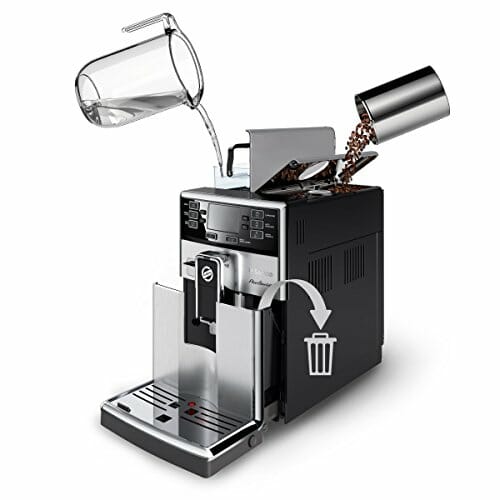
Yes. Oily beans, once ground, can still affect the brewing process of your machines, especially espresso machines which are well-known partners of dark-roasted coffee to make bold and rich espresso coffee.
The oils can leave greasy traces on:
- The bean hopper: Preventing coffee beans from sliding smoothly into the built-in grinder
- The grinder: Dulling the burrs, causing the coffee grounds to stick together, and clogging up the equipment
- The brewing unit: Slowing the water flow, affecting the coffee taste, and damaging the machinery from serious jamming
To deal with this, other than grinding the oily beans in a separate grinder, you also need to clean and descale the espresso machine regularly as needed to ensure that all of the internal parts are running smoothly.
To make the job of regular cleaning easy, you can use espresso machine cleaning tablets like these.
Another option is to enjoy them with other brewing methods that have easier-to-clean coffee makers. I’ll dive into this in a later section.
Now, let’s explore whether you should consider lowering your consumption because of their effects on YOU.
Are Oily Coffee Beans Unhealthy?
Yes, they can be unhealthy. The coffee oils are rich in diterpenes.
And two main diterpenes of coffee are cafestol and kahweol, which have been shown to be cholesterol-raising compounds.
This means that it can potentially increase your risk of heart disease. However, this effect is only a concern when cafestol is consumed in large amounts – over 4 cups of coffee a day.
On the other hand, people who only have one or two cups per day are unlikely to see any significant changes.
Another thing is, that the level of diterpenes extraction also varies by brewing method. These compounds can largely be retained in paper filters, so you don’t have to worry when consuming dark roast filtered coffee made with a drip machine, AeroPress, or Pour-Overs.
Devices like an espresso machine and French Press are a bit more worrisome. But, as long as you keep your consumption under 4 – 5 cups, you should be fine.
In general, there is no need to worry about the small amount of coffee oil found in coffee. However, if you are concerned about your cholesterol levels, you may want to limit your intake or opt for a lighter roast and/or filtered brew method.
To Wrap Up
Oily coffee beans can cause problems with your grinder, coffee machine, and even your health, but they’re still a desirable choice for many coffee drinkers. So, be sure to take the necessary precautions to minimize the risks if you’re an oily coffee lover!
If you’re looking for some new dark roasts to enjoy with your espresso machine, check out our review of the top espresso coffee beans!
Frequently Asked Question
Why Are Dark Roast Coffee Beans Oily?
They’re oilier beans because they’re roasted under high heat for a longer time, sustaining more cracks. As the structures of the beans break down, chemical reactions allow the oils from inside the beans to become visible on the surface.


